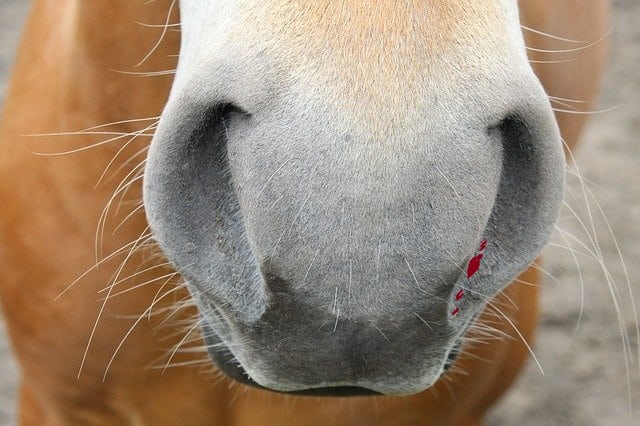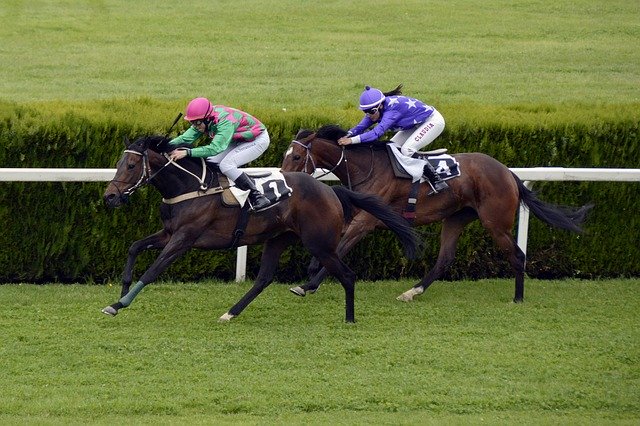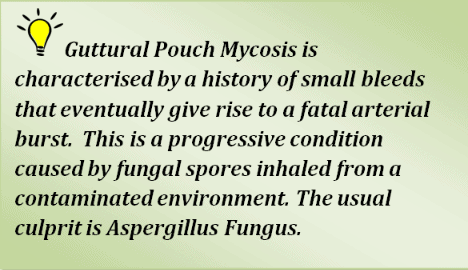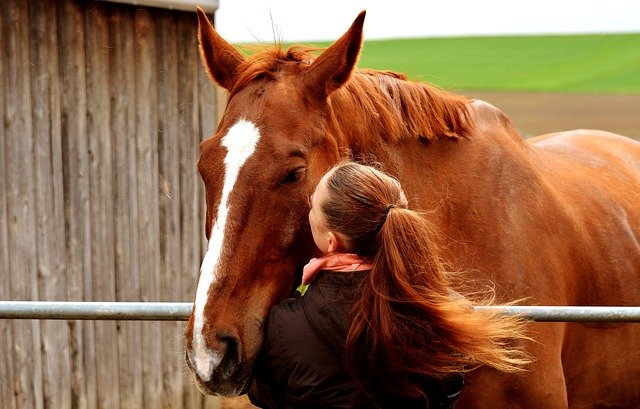Visible blood on a horse tends to turn most conscientious horse owners into a forensic investigator. CSI investigations begin with questions like; where is it coming from, why is it there, what caused it and how can we prevent it happening again. Not to mention the age old question of, what’s it going to cost and what’s the recovery time? Joking aside all signs of bleeding need to be investigated and nasal bleeding, or to give it its correct term “Epistaxis”, is no exception.

The Difference Between a Nasal Bleed and a Lung Bleed.

A nasal bleed is slightly different from a lung bleed. Bleeding in the lower respiratory tract, generally from the lungs, is known as exercise induced pulmonary haemorrhage (EIPH) and commonly associated with horses that gallop. In this case blood is seen either during exercise or very shortly after pulling up. The blood is often seen in both nostrils and may have a frothy appearance. EIPH is generally, but not exclusively, caused by increased pressure in the capillaries of the lung due to the powerful heart pushing blood into the pulmonary artery with such pressure that the capillaries burst. Combine that with the fact that as the horse gallops the action of the front leg causes the rib cage to compress, the gut to swing forward and hit the back of the diaphragm causing more pressure, it’s no wonder that most race horses suffer from some degree of EIPH even if no blood is visible.
The tendency of performance horses to suffer from EIPH can be increased by respiratory infections, dust allergies, air temperature, environmental conditions, nutrition, medications and breed.
Causes of Nose Bleeds in the Upper Respiratory Tract.
Causes of nose bleeds in the upper respiratory tract can vary and tend to be down one nostril. Most nose bleeds are self limiting and stop within 15 minutes, however if they happen for no obvious reason then they should still be investigated and this is especially true of repeated small bleeds.
Heavy Nose Bleed.
If bleeding is heavy it is obviously more serious, half a bucket would be a serious bleed and immediate veterinary treatment should be sought.
- The most common cause of a nose bleed is a bang to the head; for example a horse getting badly cast, throwing its head up when loading or a fall. In this situation the horse should be kept calm and a cold compress applied to the front of the head just below eye level. If the horse is amenable then running cold water from a hose can be effective, but don’t stress the animal. Allow the horse to lower its head and allow the blood to drain out of the nostril.
- Foreign bodies inside the nasal passages can cause a nose bleed, such as a stick poking the nostril or even when a horse is undergoing a nasal endoscopy. Again these should be self limiting and can be given first aid treatment as described above. If the horse is coughing as well then this could indicate that the foreign body is wedged in the nose or back of the throat denoting the need for veterinary attention.
- Inflammation within the upper respiratory system can lead to a nose bleed, horses with an existing respiratory condition or an infection can suffer from nose bleeds. These bleeds could be minor and just a trace of blood in a mucus discharge, in this situation if the horse is not already under veterinary care then a consultation should be organised and the infection or existing condition treated.
- In some cases bleeds can be due to the growth of polyps and tumours in the upper respiratory tract or a relatively rare condition called an Ethmoid Hematoma can develop. Once identified as a cause then surgical treatment would be required.
Guttural Pouch Mycosis.
One of the most life threatening causes of repeated nose bleeds is Guttural Pouch Mycosis; Characterised by history of small bleeds that eventually give rise to a fatal arterial burst.
Guttural pouch mycosis is a progressive condition caused by fungal spores inhaled from a contaminated environment. The usual culprit is Aspergillus fungus that is commonly found in poor hay or bedding. The guttural pouch is the perfect environment for this fungus to grow, once established it breaks down the tissue lining the pouch and with that the blood vessels within the tissues. At first small capillaries are damaged but as the condition progresses larger blood vessels become damaged and eventually the horse will have a major arterial bleed. Immediate hospital treatment is necessary to cauterise the artery and clean out the established fungal growth.

In Conclusion
In the majority of reported cases of nose bleeds the cause is a bang to the head or foreign body in the nasal passage.
In the majority of reported cases of nose bleeds the cause is a bang to the head or foreign body in the nasal passage. The fact remains that it should not be ignored in any category of equine as it could in some cases be the start of a more serious condition that if recognised early can be treated.

Be aware of early warning signs of blood in the nostrils, on the wall of the stable, on the inside or outside of your horse’s stable door or the ground just outside. If you have a horse that has a bleed then the quicker your vet can examine the horse, usually by using an endoscope, the easier it is to find where the blood has originated from and ascertain the cause. Only then can you proceed with an effective treatment program.
This Article by Jessica Soley BHSI was originally published in the February 2020 Issue of Irish Sport Horse Magazine.
